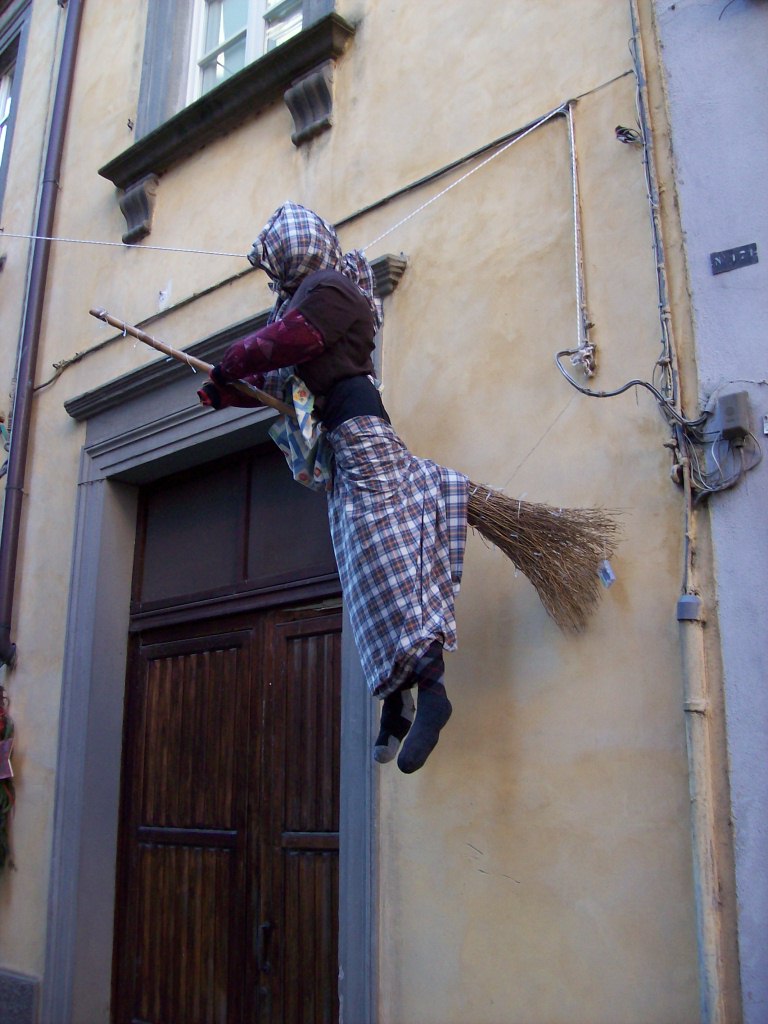Viene La Befana Posted by Serena on Jan 6, 2017 in Uncategorized
Today, the sixth of January, we celebrate l’Epifania (the Epiphany), which commemorates the arrival of i Tre Re Magi (the Three Wise Men) in Bethlehem. Today also marks the end of the Christmas festivities (collective sigh of relief!).
Before the modern era of globalization, and the adoption of certain traditions from America, l’Epifania was the day when Italian children received their presents from la Befana, an old woman dressed in rags. If you’re not familiar with the Italian tradition of la Befana, I recommend this article: Viva La Befana
Here’s a touching poem on the theme written by Giovanni Pascoli (1855-1912), in which la Befana does’t bring presents, but is, instead, a silent witness to social injustices.
La Befana di Giovanni Pascoli
Viene viene la Befana,
vien dai monti a notte fonda.
Come è stanca! La circonda
neve, gelo e tramontana.
Viene viene la Befana.
She comes, the Befana comes,
she comes from the mountains deep in the night.
How tired she is! She’s surrounded
by snow, ice and the north wind.
She comes, the Befana comes.
Ha le mani al petto in croce,
e la neve è il suo mantello,
ed il gelo il suo pannello,
ed il vento la sua voce.
Ha le mani al petto in croce.
She has her hands crossed upon her chest,
and the snow is her mantel,
and the ice is her clothes,
and the wind is her voice.
She has her hands crossed upon her chest.
E si accosta piano piano
alla villa, al casolare,
a guardare, ad ascoltare,
or più presso or più lontano.
Piano piano, piano piano.
And she softly gets close
to the villa, the farmhouse,
to watch, to listen,
now closer now further away.
Softly, softly.
Che c’è dentro questa villa?
Uno stropiccìo leggero.
Tutto è cheto, tutto è nero.
Un lumino passa e brilla.
Che c’è dentro questa villa?
What’s there inside this villa?
A gentle shuffling.
All is quiet, all is black.
A candlelight passes and shines.
What’s there inside this villa?
Guarda e guarda… tre lettini
con tre bimbi a nanna, buoni.
Guarda e guarda… ai capitoni
c’è tre calze lunghe e fini.
Oh! tre calze e tre lettini…
She watches and watches… three little beds
with three sleeping children, they are good.
She watches and watches… at the fire dogs
there are three long fine socks.
Oh! three socks and three little beds…
Il lumino brilla e scende,
e ne scricchiolan le scale;
il lumino brilla e sale,
e ne palpitan le tende.
Chi mai sale? chi mai scende?
The candlelight shines and descends,
and the stairs creak;
the candlelight shines and goes up,
and the curtains flap.
Who goes up? who goes down?
Coi suoi doni mamma è scesa,
sale con il suo sorriso.
Il lumino le arde in viso
come lampada di chiesa.
Coi suoi doni mamma è scesa.
Mother has descended with her presents,
she goes up with her smile.
The candlelight glows on her face
like a church lamp.
Mother has descended with her presents.
La Befana alla finestra
sente e vede, e si allontana.
Passa con la tramontana,
passa per la via maestra,
trema ogni uscio, ogni finestra.
The Befana at the window
hears and sees, and moves away.
She goes with the northern wind,
she goes along the main road,
every door, every window shakes.
E che c’è nel casolare?
Un sospiro lungo e fioco.
Qualche lucciola di fuoco
brilla ancor nel focolare.
Ma che c’è nel casolare?
And what’s in the farmhouse?
A long faint sigh.
A few embers of fire
still glow in hearth.
But what’s in the farmhouse?
Guarda e guarda… tre strapunti
con tre bimbi a nanna, buoni.
Tra la cenere e i carboni
c’è tre zoccoli consunti.
Oh! tre scarpe e tre strapunti…
She watches and watches… three palliasses
with three sleeping children, they are good.
Amongst the ashes and the coal
there are three worn out clogs.
Oh! three shoes and three palliasses…
E la mamma veglia e fila
sospirando e singhiozzando,
e rimira a quando a quando
oh! quei tre zoccoli in fila…
veglia e piange, piange e fila.
And the mother keeps watch and spins
sighing and sobbing,
and beholds every now and then
oh! those three clogs in a row…
she keeps watch and cries, cries and spins.
La Befana vede e sente;
fugge al monte, ch’è l’aurora.
Quella mamma piange ancora
su quei bimbi senza niente.
La Befana vede e sente.
The Befana sees and hears;
runs to the mountain, because it’s dawn.
That mother is still crying
over those children without anything.
The Befana sees and hears.
La Befana sta sul monte.
Ciò che vede è ciò che vide:
c’è chi piange e c’è chi ride;
essa ha nuvoli alla fronte,
mentre sta sul bianco monte.
The Befana is on the mountain.
What she sees is what she saw:
there are those who cry and those who laugh;
she has clouds on her forehead,
while she is on the white mountain.

Build vocabulary, practice pronunciation, and more with Transparent Language Online. Available anytime, anywhere, on any device.





Comments:
Janet Austin:
Molto bello!
Mary Pollina Knab:
Grazie! Mi piace molto!
Colleen:
Thanks again for a fabulous post. I do so enjoy reading them.